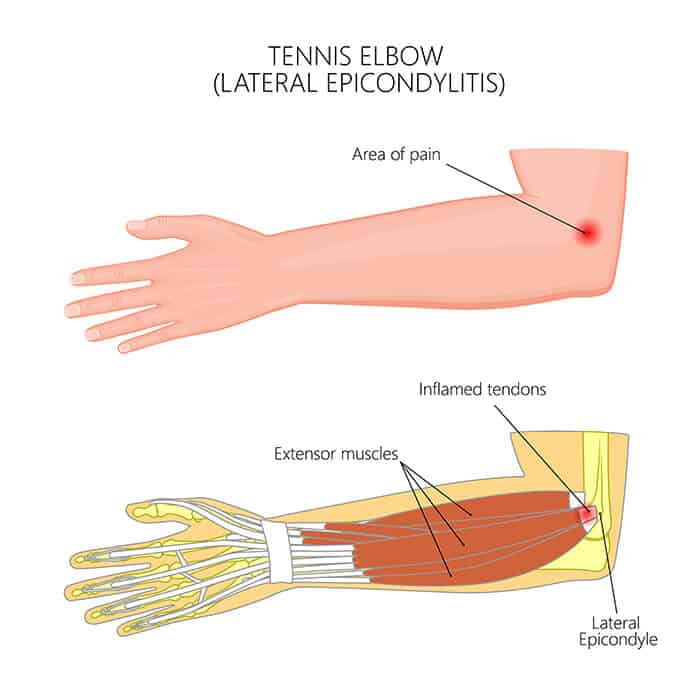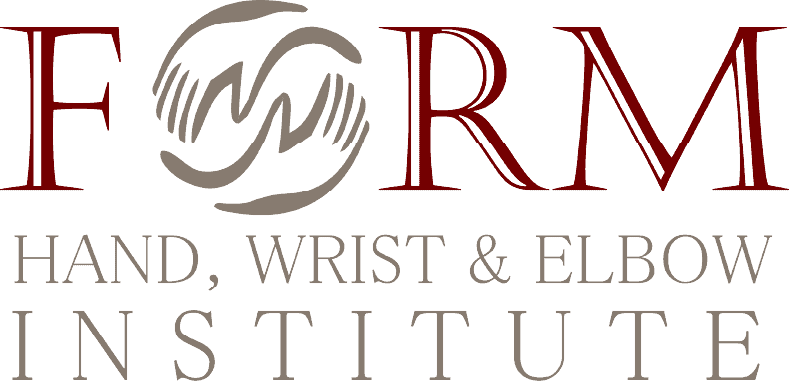Tennis Elbow
Tennis elbow or lateral epicondylitis is tendinitis of the outside of the elbow joint due to repetitive arm and wrist movement. It is an overuse muscle strain injury that occurs after the repeated contraction of the forearm muscles that you use to straighten and raise your hand and wrist. Consequently, the repetitive overuse of these muscles causes inflammation of the tendons, the connective tissue between the muscle and the bone, resulting in an overuse injury.
Causes of Tennis Elbow
Tennis elbow is mainly caused by repetitive use during tennis or any other activity that uses the hand or wrist muscles. These muscles share a common tendon that is connected to the portion of the elbow bone known as the lateral epicondyle. Tiny tears happen over time and with age, and the body has a more difficult time repairing itself which leads to symptoms of tennis elbow.
There are many activities that can cause this damage, such as
- Sporting activities, including tennis and racquet sports.
- Repetitive computer mouse use.
- Cutting up cooking ingredients, especially meat.
- Repetitive use of the forearm or repeated twisting of the wrist.
Most often, the patient’s dominant arm is affected.
Symptoms of Tennis Elbow
Symptoms of tennis elbow or lateral epicondylitis include pain while bending the wrist, tenderness or pain in the elbow, difficulty picking up heavy objects, and weakness in the hand and wrist. When the pain and/or weakness is interfering with your daily activities, it is time to seek tennis elbow treatment from an orthopedic hand specialist such as Dr. Besh.

Diagnosing Tennis Elbow
During your consultation, Dr. Besh will ask you questions about your medical history, how your symptoms developed, any occupational risk factors, and recreational sports participation. He will also conduct a physical exam of your fingers, hand, and wrist to determine the source of your pain or tenderness.
Dr. Besh may also order x-rays and an MRI to rule out other possible causes.
Treatment for Tennis Elbow
Treatment for tennis elbow includes physical therapy, stretching, rest, and/or anti-inflammatory medication.
Specific exercises are helpful for strengthening the muscles of the forearm. Check out the video below for some exercises that you can do at home.
If the symptoms of tennis elbow persist after conservative treatment, then cortisone injections or minimally invasive surgery may be considered for tennis elbow.

